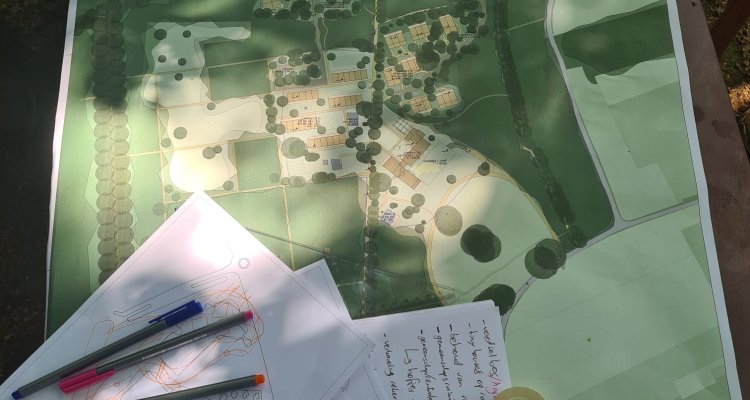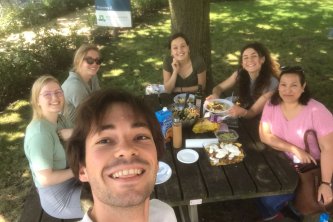
Project
Nature-inclusive housing and living together on the Wageningse Berg
In the Dorschkamp area on the Wageningse Berg, construction plans are being made in open spaces in the forest. Association “De Beuk” wants to manifest ecological housing on that location. The Science Shop has been approached by De Beuk to investigate how the balance between people and nature on the Wageningse Berg could be practically shaped.
A number of initiatives, including Visiegroep Ecodorp Wageningen, the CVEG and Platform Duurzaam Wageningen, have united to form the association “De Beuk” in order to purchase a piece of land on the Wageningse Berg as one party. Future residents are expected to make an active contribution to manifest a collective dream. There is not yet a fixed plan of what the area should look like and how residents can contribute to it. As the current owners of the area, Staatsbosbeheer and Smink Vastgoed have carried out baseline measurements in the field on nature and culture. This provided insights into the possibilities of this area, including multiple homes and tiny houses, a vegetable garden and perhaps even a communal space.
First research results
A group of students has provided advice for the course Academic Conslutancy Training on what measures can be taken to create a human-inclusive nature community on De Dorschkamp. There are three requirements for a healthy and thriving community:
- Effective management
- “Community Glue”
- Good process and communication skills
For effective management, it is suggested to implement the governance structure of sociocracy. The development of shared spaces in the ecological community allows members to come together to undertake shared activities that enrich their process and communication skills. Suggestions are:
- Native Forest Garden with multi-use building: gardening, workshops, community plant shop, giveaway shop, utility room.
- Large open outdoor space: (food) festivals, meetings, local market, jam sessions, workshops.
- Small outdoor spaces: smaller gatherings, walking, meditation, spirituality, conscious communication exercises, children's playgrounds, creating human-nature consciousness.
- Community center: dinners, workshops, creating through arts and crafts, jam sessions, children's playroom, socializing.
In addition, the students created a list of tree species present in the area that are suitable for planting within the community based on their selected functionalities related to climate, food supply, cultural value, timber production and human safety. They also listed important animal species present in the area, based on their existing habitats and environment. Using those lists, they made a suggestion for developing community gardens, including edible plants.
They also looked at what kind of technology could work in the specific area: for solar panels, for example, the dry soil, the low groundwater level and the low sunlight level must be taken into account. For water management, this means that water retention is necessary, which leads to the following suggestions: reusing rainwater for toilets and washing machines and gardening via green roofs. The other suggestions were developing water-smart homes and constructing rainwater ponds. These measures not only retain and reuse water, but also contribute to energy and heating demand and support biodiversity by adding native plant species.
They recommend the use of miscanthus, straw and hemp for load-bearing walls, floors and roofs. These materials are also suitable for insulation, but flax is also a suitable option. For heating it is considered to use a combined system of Compost Heat Recovery System with the CESAR battery and heat pumps. The heat pump can be an air-water heat pump, which is cheaper and causes less disruption to nature, or a geothermal heat pump, which is more efficient. For the energy demand, they propose an integrated smart IT system that combines solar panels on a microgrid with a sand battery for energy storage.

Follow-up: succesfully realising an ecological community
Another group of students provided the Beuk with advice and considerations after having carefully studied different angles and perspectives regarding nature-inclusivity, as well as limitations and suggestions of improvement specific to their context. By addressing and embracing those aspects of nature inside a community, the development of a sustainable and inclusive neighbourhood can lead to a higher climate resilience, as well as a higher social cohesion and involvement with nature coming from the different residents.
They tried to answer the following research question: “What specific nature-inclusive measures have been proven successful and unsuccessful in the shaping of different ecological neighbourhoods and ecovillages and how could De Beuk implement such practices?”. Their findings can be found on this website.
BioTraces
Furthermore, we want to see whether a collaboration can be established between the Science Shop and BioTraces. BioTraces examines De Beuk as a case study. A link could be made between student work at TU Delft and WUR.